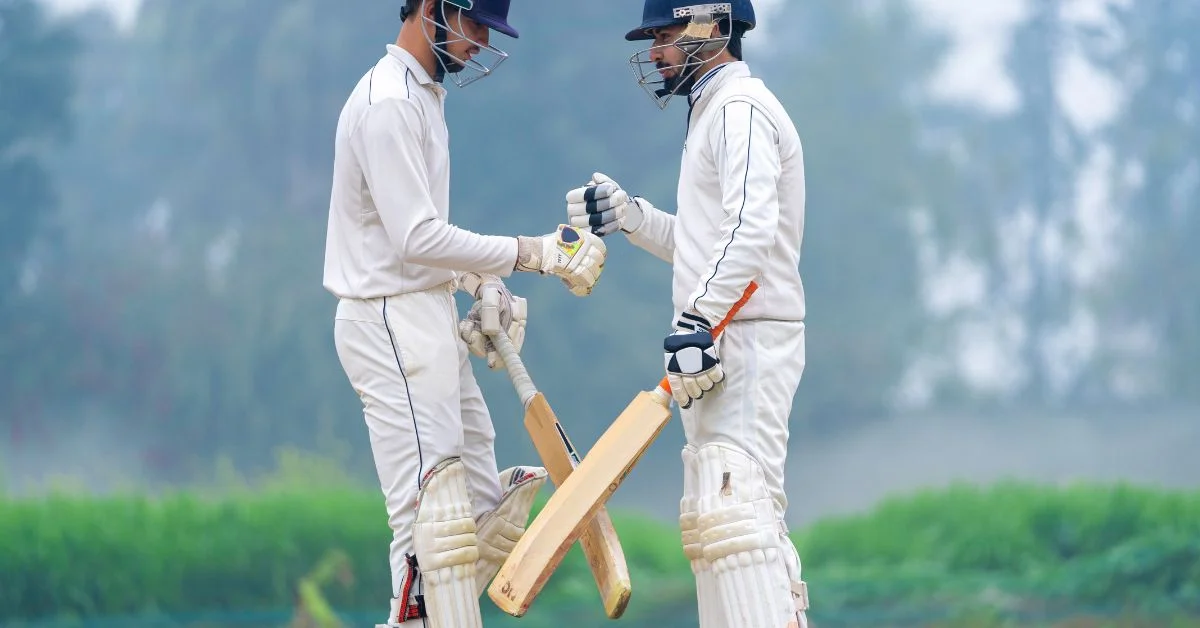In the age of endless content and fleeting attention spans, few digital formats have sparked joy and collective nostalgia like Out of Context Cricket. Whether you’re a seasoned cricket buff or a casual viewer, chances are you’ve stumbled across a meme or tweet showing a strange fielding position, a funny facial reaction, or an emotional press conference quote—completely divorced from its original meaning, and yet… oddly perfect.
This modern phenomenon blends humor, storytelling, and shared fandom into something uniquely 21st century: sports culture reimagined for the internet generation. Here’s an in-depth look into what Out of Context Cricket is, how it originated, why it resonates, and what it means for the future of cricket fandom.
What Is “Out of Context Cricket”?
Out of Context Cricket refers to a social media trend in which clips, quotes, images, or moments from cricket are shared without any background or explanation. Stripped of the original game context—be it match situation, player motive, or even timeline—these moments often turn unintentionally funny, absurd, nostalgic, or poetic.
The charm lies in the dissonance: a 10-second video of MS Dhoni adjusting his gloves may seem mundane in a match, but isolated, it becomes a mood for patience, confidence, or even procrastination. A misfield from a Test match becomes a metaphor for a bad Monday. That’s the heart of the “Out of Context” genre.
Where Did It Start?
Though the broader “Out of Context” meme format has existed since the early 2010s—popularized through Twitter accounts like “Out of Context Humans” or “Out of Context Simpsons”—Out of Context Cricket found its niche around 2018-2019, coinciding with the explosive growth of cricket fandom on platforms like Twitter, Reddit, and Instagram.
Some of the earliest viral posts were screenshots of cryptic expressions from Virat Kohli, awkward post-match presentations, and peculiar commentary lines from former cricketers. As meme culture expanded, so did the creativity. Fans began remixing old cricket moments from the 90s and 2000s with modern captions, GIFs, and pop culture references.
By 2020, with the pandemic halting live sports, the format became a nostalgic crutch—allowing fans to relive matches in a lighter, meme-driven tone. Accounts dedicated solely to “Out of Context Cricket” began amassing hundreds of thousands of followers, tapping into a universal truth: the love for cricket doesn’t need a scoreboard to be enjoyed.
Why Does It Work So Well?
The popularity of Out of Context Cricket isn’t accidental. It thrives on several psychological and cultural factors:
1. Nostalgia in Byte-Sized Pieces
A still from the 2003 World Cup. A Ganguly celebration at the NatWest final. A close-up of Dravid chewing gum in the slip cordon. For millennials who grew up in cricket’s golden era, these snapshots evoke deep memory and emotion—with or without context.
2. Humor Without Explanation
Comedy often depends on surprise, absurdity, or incongruity. Out of Context Cricket excels here. A player diving too early, missing a high-five, or awkwardly celebrating becomes instantly funny without requiring the viewer to know what just happened in the match.
3. Relatability and Metaphor
Internet users have found an uncanny way to map cricket’s isolated moments onto their own lives. A bowler looking frustrated after a dropped catch? Caption it with “When the group project fails.” A batter staring blankly after getting out? “Me after sending a risky text.”
4. Low Barrier to Entry
You don’t need to know the scorecard, the tournament, or even the player’s name to enjoy a 10-second clip of pure chaos or grace. This opens cricket up to non-fans and casual browsers.
A Digital Archive of Emotions
In a way, Out of Context Cricket is less about cricket and more about capturing fleeting human emotion. It acts as a digital folklore, preserving the quirky, emotional, and forgotten fragments of the game.
Unlike highlight reels that show sixes and wickets, Out of Context Cricket preserves:
- Reactions of players warming the bench
- Unintentional bloopers
- Crowd reactions
- Commentators saying odd, unscripted things
- Cameramen zooming into completely random moments
This trend democratizes memory. It’s no longer just about who won the match, but about how the match made us feel—and laugh.
The Role of Social Media Platforms
Each platform has given this trend its own flavor:
Here, the Out of Context Cricket accounts focus on quick hits—screenshots, short videos, and sharp captions. They often go viral for their witty, layered humor.
Visual and carousel-friendly, Instagram accounts curate batches of moments, remixing them with reels, filters, and sound effects. It’s more meme-heavy and designed for shareability.
Communities like r/Cricket and r/IndianCricket use out-of-context posts for inside jokes, discussions, and to spotlight underappreciated moments.
YouTube Shorts & TikTok
Short-form video content featuring retro commentary clips, synced with trending audio or ironic voiceovers, brings the meme format to video-centric audiences.
Iconic “Out of Context” Cricket Moments
Some recurring clips and images have achieved near-legendary status within this community. A few notable examples:
- Ravi Shastri’s deadpan commentary lines from the 2000s, used ironically
- Virat Kohli yelling “Come on boys!” — now a rallying cry meme
- Inzamam-ul-Haq’s confused run-outs
- Ashwin’s expressions while bowling in high-stakes games
- Anil Kumble batting with a broken jaw—reframed as “me showing up to work sick”
- Yuvraj Singh shrugging at the umpire—used across mood boards
These clips float freely across the digital landscape, transformed by captions, edits, or simply contextless charm.
How Players and Broadcasters React
Interestingly, many current and former cricketers enjoy the trend. Some even engage with the memes directly. R Ashwin, for instance, has reposted out-of-context moments of himself with laughing emojis. Wasim Jaffer, a meme legend in his own right, often posts ironic or dry-humor-laced tweets that feed into the community.
Broadcast companies like Star Sports and Sony have also begun adopting this language—intentionally airing “funny replays” or behind-the-scenes moments with meme-friendly commentary. Even official team handles like BCCI and ICC occasionally post tongue-in-cheek content, signaling a cultural shift toward humor in sports coverage.
The Flip Side: Can It Distort Reality?
While Out of Context Cricket is mostly harmless fun, there are downsides to consider:
- Misinterpretation: Stripped of context, some moments can lead to misunderstandings—especially emotional ones like press conferences or player altercations.
- Overexposure: Constant meme-ing can lead to fatigue or reduce emotional moments to jokes, diluting their original gravity.
- Selective Memory: The format tends to glorify the funny and weird, sometimes overshadowing genuine performances or important events.
That said, these are less criticisms and more reminders that memes, while delightful, are still fragments—not the full story.
Out of Context Cricket as Digital Storytelling
What makes this trend enduring is its capacity for storytelling. Even in absurdity, these posts often spark curiosity: “What match was this from?”, “Why did he look so confused?”, “What was the commentator reacting to?”
And in answering these questions, fans often rediscover old matches, forgotten rivalries, and classic performances. It creates a loop of engagement: memes lead to research, which leads to watching, which leads to deeper fandom.
This unintentional storytelling is what makes Out of Context Cricket not just a trend, but a modern-day archive—constantly growing, reinterpreting, and entertaining.
What’s Next for the Trend?
As we move further into 2025, Out of Context Cricket shows no signs of slowing. Instead, it’s evolving:
- AI-generated Memes: Some fans are using AI tools to create fake commentary dialogues, deepfakes, or synthetic match scenarios based on real footage.
- Augmented Reality Filters: Cricket faces and gestures are being turned into AR filters for fans to mimic and share.
- Live Match Integration: Platforms are now designing features that allow live match moments to be clipped and meme-ified in real-time.
- Fan Collaborations: Meme creators are partnering with broadcasters and franchises to curate official “Out of Context” recaps.
The line between official content and fan-made humor is blurring. The meme makers are no longer outsiders—they are shaping how cricket is consumed.
Conclusion
Out of Context Cricket is more than a meme trend—it is a lens through which a generation has chosen to view and enjoy the game. It thrives on irony, nostalgia, humor, and shared emotion. It democratizes sports storytelling, inviting everyone—not just commentators or analysts—to participate in cricket’s evolving narrative.
While it may never replace traditional coverage or analytical insights, Out of Context Cricket fulfills a different need: joy without explanation. And in an era of information overload, that might just be what we all need.
FAQs
1. What does “Out of Context Cricket” mean?
It refers to cricket clips or images shared without background details, often resulting in humorous or nostalgic interpretations.
2. Why is Out of Context Cricket so popular online?
Because it’s funny, relatable, and doesn’t require deep cricket knowledge to enjoy—it’s accessible to everyone.
3. Is Out of Context Cricket only about memes?
Not entirely. While memes drive the format, it’s also about revisiting old moments and engaging emotionally with the sport in new ways.
4. Can Out of Context posts spread misinformation?
Occasionally, yes. Without context, emotional or controversial clips can be misinterpreted. It’s important to be media-literate when consuming them.
5. Where can I find Out of Context Cricket content?
Popular platforms include Twitter, Instagram, Reddit, and YouTube—just search for accounts with “Out of Context Cricket” in the name.
For more information, click here.









